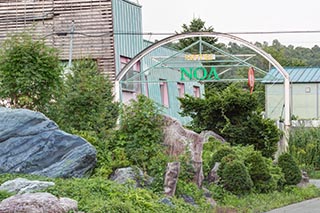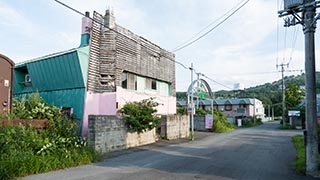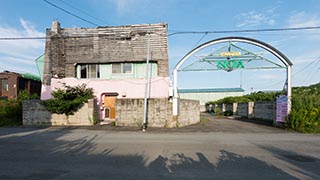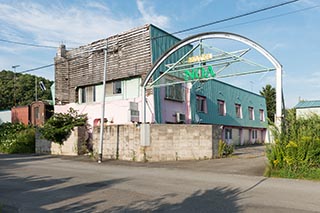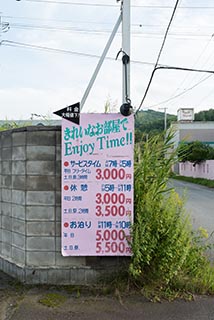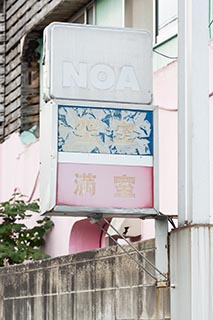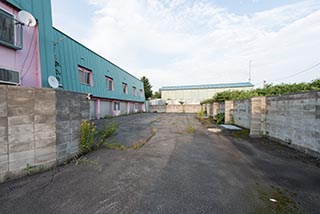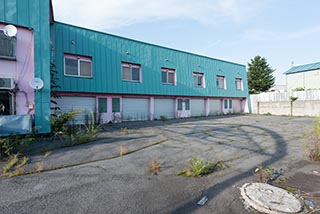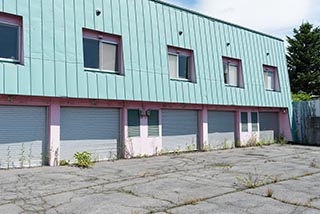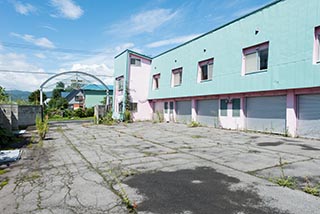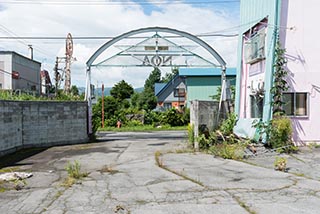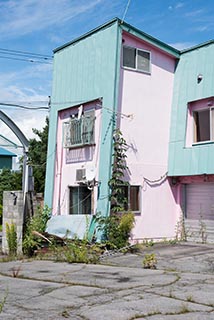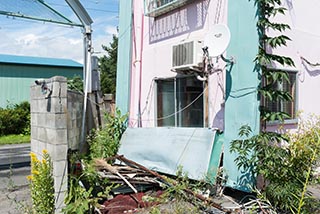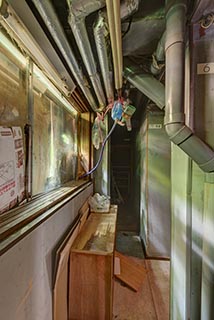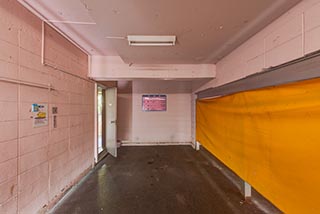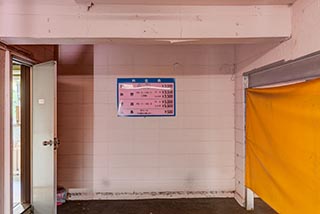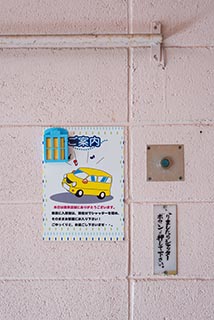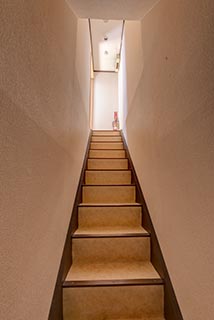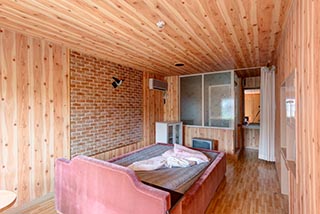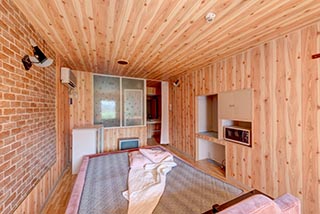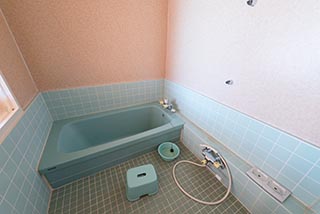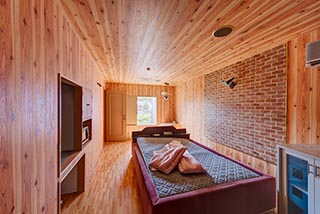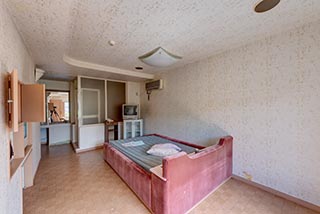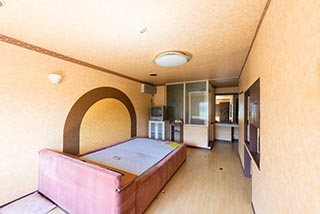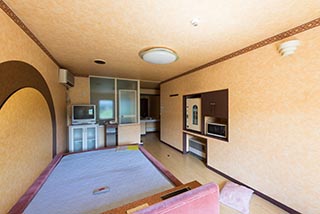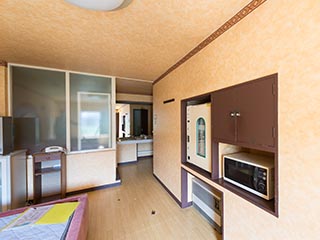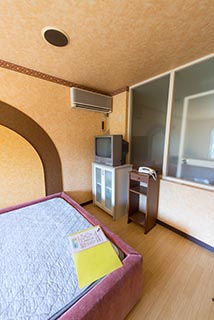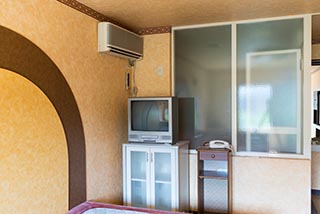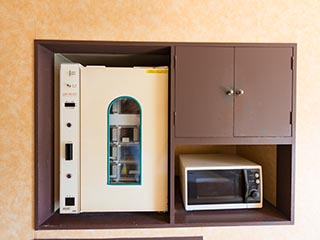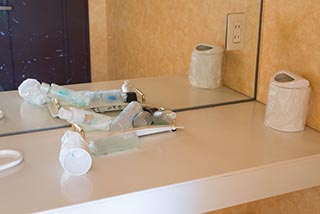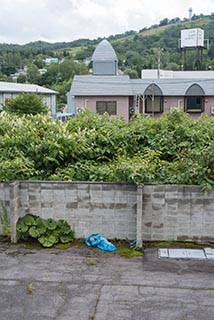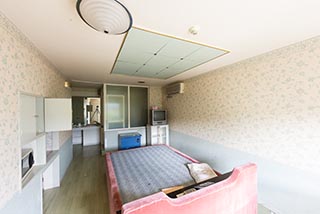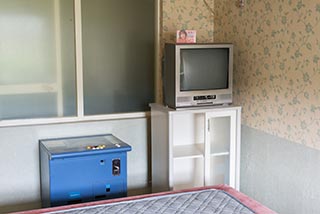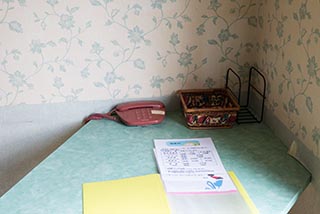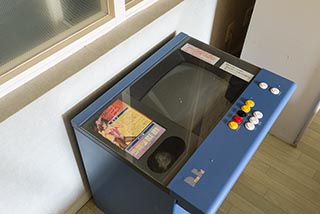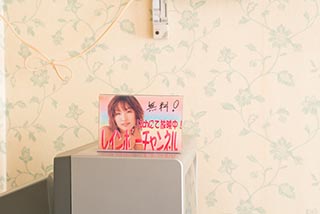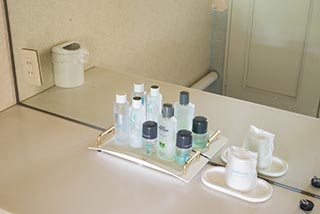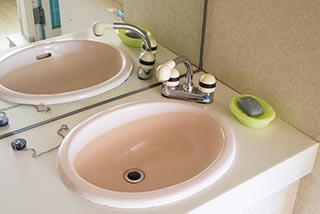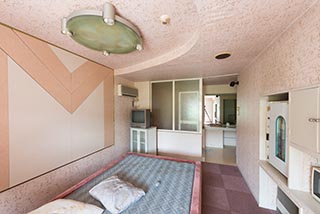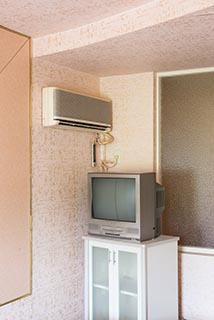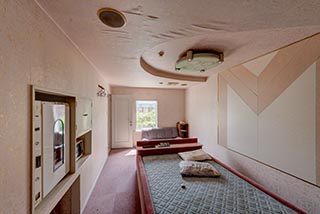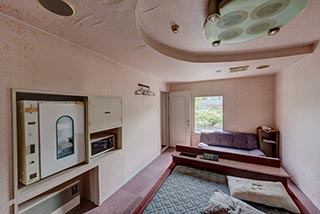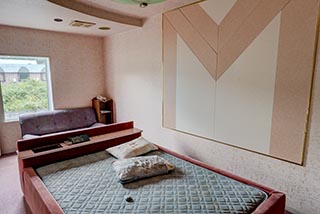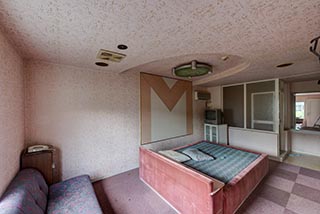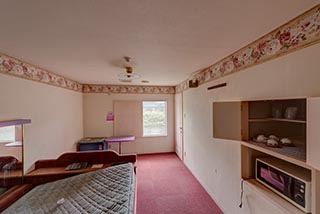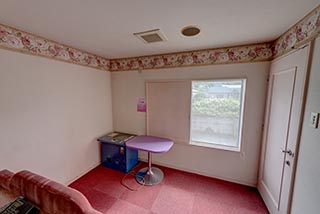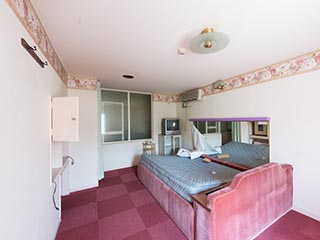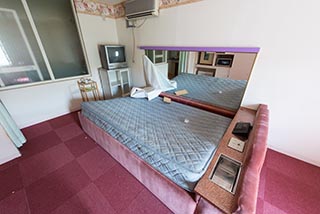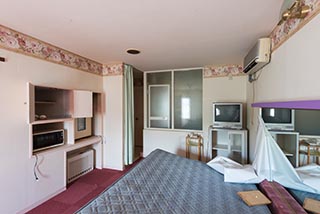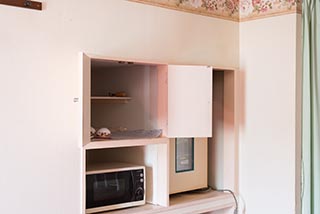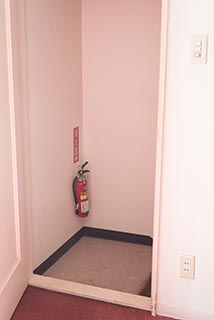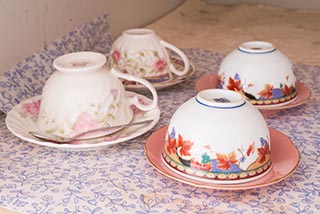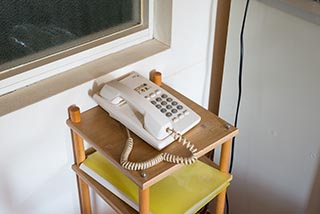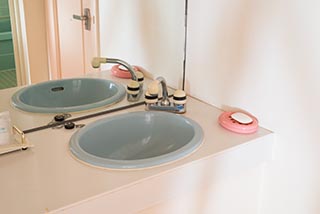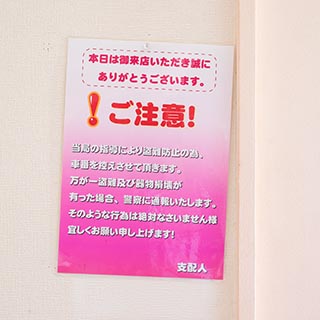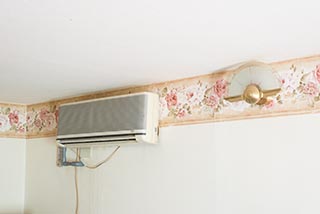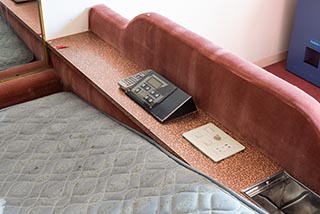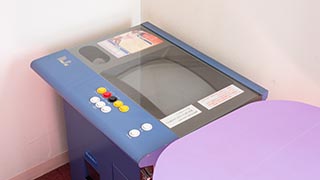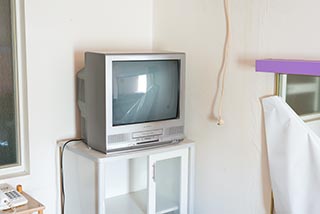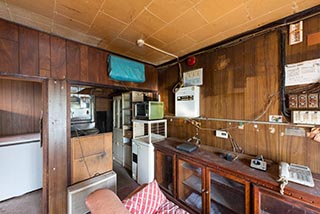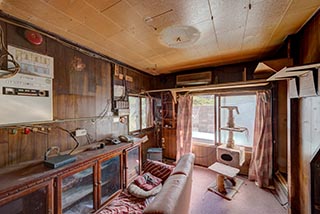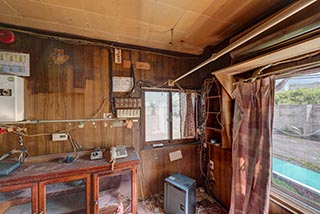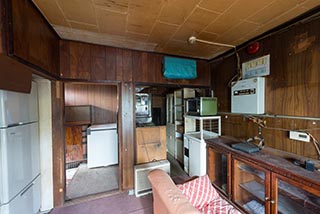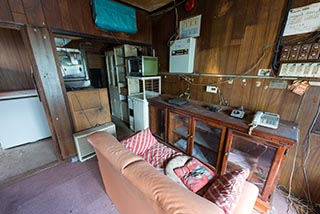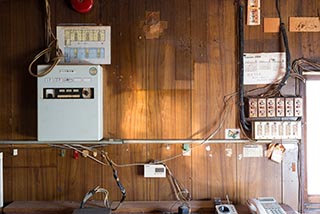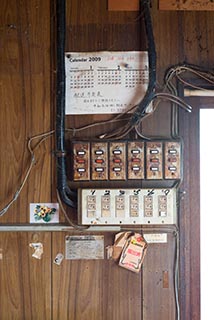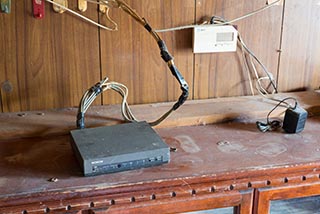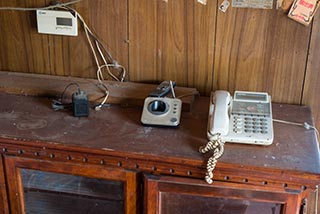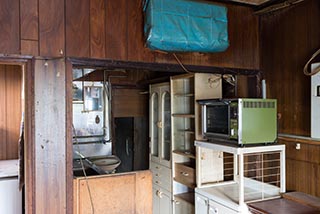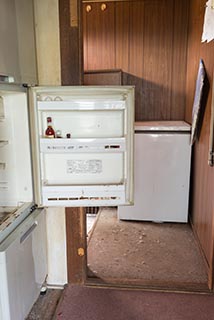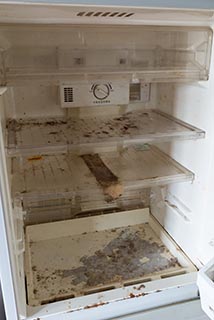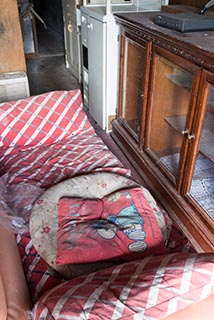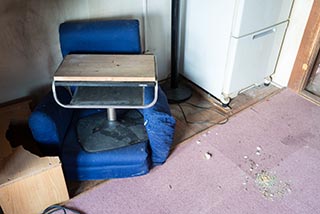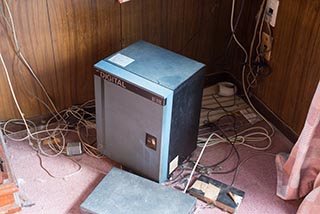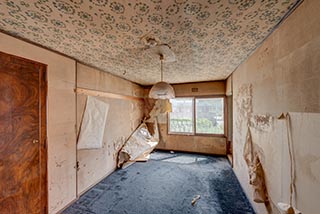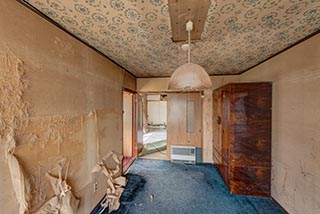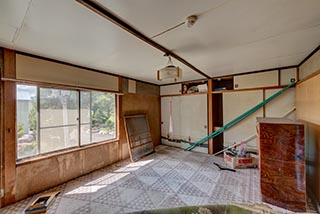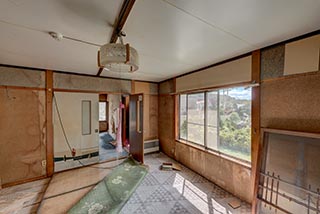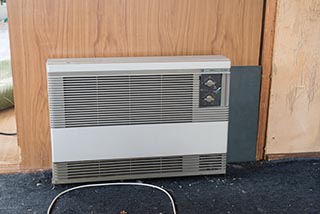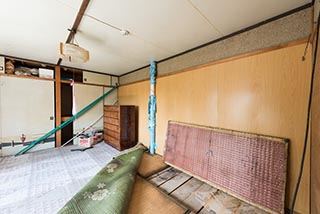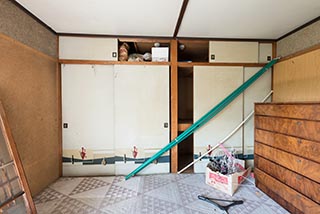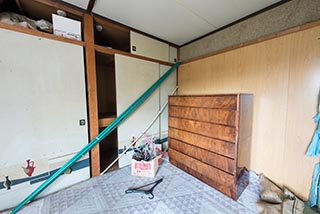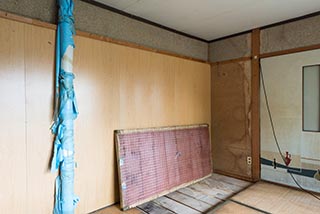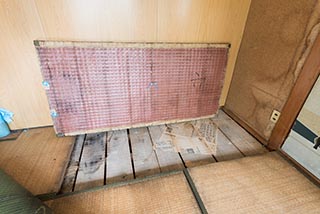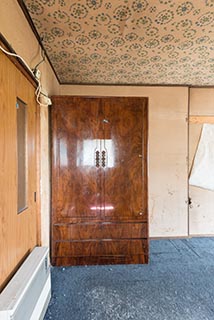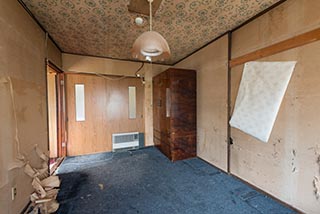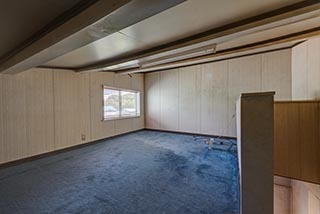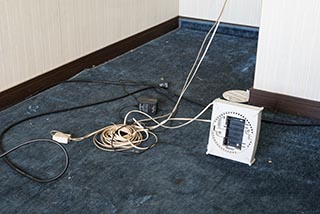The Hotel Noa stands amidst a moribund love hotel district in the town of Asahikawa, Hokkaido. The entire top half of the front facade had lost its sheeting, leaving a bare wooden frame, so I had little doubt that the place was abandoned.
A sign by the entrance showed the room rates in the hotel's last days. Like many love hotels, the Noa had a complicated system of prices depending on the time and day. Between the hours of 7:00 and 17:00, for ¥3,000 you could stay for as long as you liked on weekdays, or three hours on weekends and public holidays. Between the hours of 17:00 and 23:00 a two hour stay cost ¥3,000 on weekdays, or ¥3,500 on weekends and public holidays. An overnight stay, from 23:00 to 10:00, cost ¥5,000 on weekdays or ¥5,500 on weekends and public holidays. Interestingly, the prices never dropped as far as those at the nearby Hotel Queen, which was still in business.
After verifying that the hotel was completely abandoned, I made my way along the narrow alley to the left of the building, and found a sliding window that had been left unlatched, through which I made my entry.
The window opened into a narrow rear corridor, which provided a passage between the guest rooms and the office. Most of the windows were boarded up, so the corridor was a lot darker than it looks in the photograph, which required a very long exposure. Note that the last room is number seven, but there were clearly only six rooms. Each garage had its own stairway leading directly to the room above, so the customers wouldn't have seen the dingy corridor.
The rooms were all pretty much the same, apart from the wallpaper. One was decorated in a tacky fake timber and brickwork motif, but I thought the others were adequately tasteful. They were typical of the comfortable, but hardly luxurious rooms that you'd expect in a small rural love hotel.
Apart from the damaged facade, the building was intact and waterproof. The rooms were still in good condition, and most of the contents had been left in place. The windows were still unbroken and closed, so the air was stale, and some rooms had an unpleasant smell, which was probably animal urine. I didn't try to open any windows for fear of attracting attention. I found a nasty surprise in one of the bathtubs - the partially decayed remains of a dead cat. In the interests of thoroughly documenting the scene I took a photograph of the cat, but as a small concession to good taste I won't show it here.
The front part of the building contained a utility room and office on the ground floor, and an apartment above. The utility room was too dark to photograph by ambient light, and I didn't think it was worth the considerable hassle of fetching and setting up my LED panels.
There was a 2009 calendar on the office wall, which gives an idea of when the place was abandoned. I also noticed that the control panels for the rooms were numbered 1, 2, 3, 5, 6, 7. Apparently the number four can be considered unlucky in Japan (and some other Asian cultures), so the hotel didn't have a room four, just as some buildings have no thirteenth floor.
The cat gymnasium by the front window shows that the proprietor obviously had a cat. This suggested the gruesome possibility that this was the same cat that I saw decomposing in one of the bathrooms. Perhaps the unfortunate creature was somehow left behind, and forlornly wandered around inside the hotel until it starved to death. This could have happened if its owner suddenly died, or took ill. On the other hand, the corpse might just have been a neighbourhood cat that somehow got in after the place was abandoned.
Morbid curiosity compelled me to open the refrigerator. As expected, it wasn't a pretty sight.
A staircase led up to an apartment above the office. The proprietor, or perhaps proprietors, must have lived here. It would have been a palace compared to my first apartment in Tokyo. A second staircase led to an attic room where the ceiling was too low to stand up.
